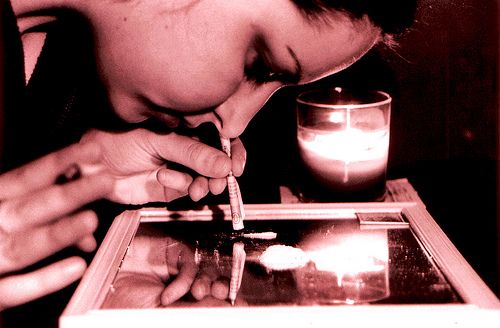 AP– After 40 years, the United States’
war on drugs has cost $1 trillion and hundreds of thousands of lives, and for
what? Drug use is rampant and violence even more brutal and widespread.
AP– After 40 years, the United States’
war on drugs has cost $1 trillion and hundreds of thousands of lives, and for
what? Drug use is rampant and violence even more brutal and widespread.
Even U.S. drug czar Gil Kerlikowske concedes the strategy hasn’t worked.
“In the grand scheme, it has not been successful,” Kerlikowske told The Associated Press. “Forty years later, the concern about drugs and drug problems is, if anything, magnified, intensified.”
This week President Obama promised to “reduce drug use and the great damage it causes” with a new national policy that he said treats drug use more as a public health issue and focuses on prevention and treatment.
Nevertheless, his administration has increased spending on interdiction and law enforcement to record levels both in dollars and in percentage terms; this year, they account for $10 billion of his $15.5 billion drug-control budget.
Kerlikowske, who coordinates all federal anti-drug policies, says it will take time for the spending to match the rhetoric.
“Nothing happens overnight,” he said. “We’ve never worked the drug problem holistically. We’ll arrest the drug dealer, but we leave the addiction.”
His predecessor, John P. Walters, takes issue with that.
Walters insists society would be far worse today if there had been no War on Drugs. Drug abuse peaked nationally in 1979 and, despite fluctuations, remains below those levels, he says. Judging the drug war is complicated: Records indicate marijuana and prescription drug abuse are climbing, while cocaine use is way down. Seizures are up, but so is availability.
“To say that all the things that have been done in the war on drugs haven’t made any difference is ridiculous,” Walters said. “It destroys everything we’ve done. It’s saying all the people involved in law enforcment, treatment and prevention have been wasting their time. It’s saying all these people’s work is misguided.”
___
In 1970, hippies were smoking pot and dropping acid. Soldiers were coming home from Vietnam hooked on heroin. Embattled President Richard M. Nixon seized on a new war he thought he could win.
“This nation faces a major crisis in terms of the increasing use of drugs, particularly among our young people,” Nixon said as he signed the Comprehensive Drug Abuse Prevention and Control Act. The following year, he said: “Public enemy No. 1 in the United States is drug abuse. In order to fight and defeat this enemy, it is necessary to wage a new, all-out offensive.”
His first drug-fighting budget was $100 million. Now it’s $15.1 billion, 31 times Nixon’s amount even when adjusted for inflation.
Using Freedom of Information Act requests, archival records, federal budgets and dozens of interviews with leaders and analysts, the AP tracked where that money went, and found that the United States repeatedly increased budgets for programs that did little to stop the flow of drugs. In 40 years, taxpayers spent more than:
-$20 billion to fight the drug gangs in their home countries. In Colombia, for example, the United States spent more than $6 billion, while coca cultivation increased and trafficking moved to Mexico — and the violence along with it.
-$33 billion in marketing “Just Say No”-style messages to America’s youth and other prevention programs. High school students report the same rates of illegal drug use as they did in 1970, and the Centers for Disease Control and Prevention says drug overdoses have “risen steadily” since the early 1970s to more than 20,000 last year.
-$49 billion for law enforcement along America’s borders to cut off the flow of illegal drugs. This year, 25 million Americans will snort, swallow, inject and smoke illicit drugs, about 10 million more than in 1970, with the bulk of those drugs imported from Mexico.
-$121 billion to arrest more than 37 million nonviolent drug offenders, about 10 million of them for possession of marijuana. Studies show that jail time tends to increase drug abuse.
-$450 billion to lock those people up in federal prisons alone. Last year, half of all federal prisoners in the U.S. were serving sentences for drug offenses.
At the same time, drug abuse is costing the nation in other ways. The Justice Department estimates the consequences of drug abuse — “an overburdened justice system, a strained health care system, lost productivity, and environmental destruction” — cost the United States $215 billion a year.
Harvard University economist Jeffrey Miron says the only sure thing taxpayers get for more spending on police and soldiers is more homicides.
“Current policy is not having an effect of reducing drug use,” Miron said, “but it’s costing the public a fortune.”
Continue reading about the US Drug War Has Met None of its Goals.
Copyright © 2010 The Associated Press
Photo by flickr user Andronicusmax










